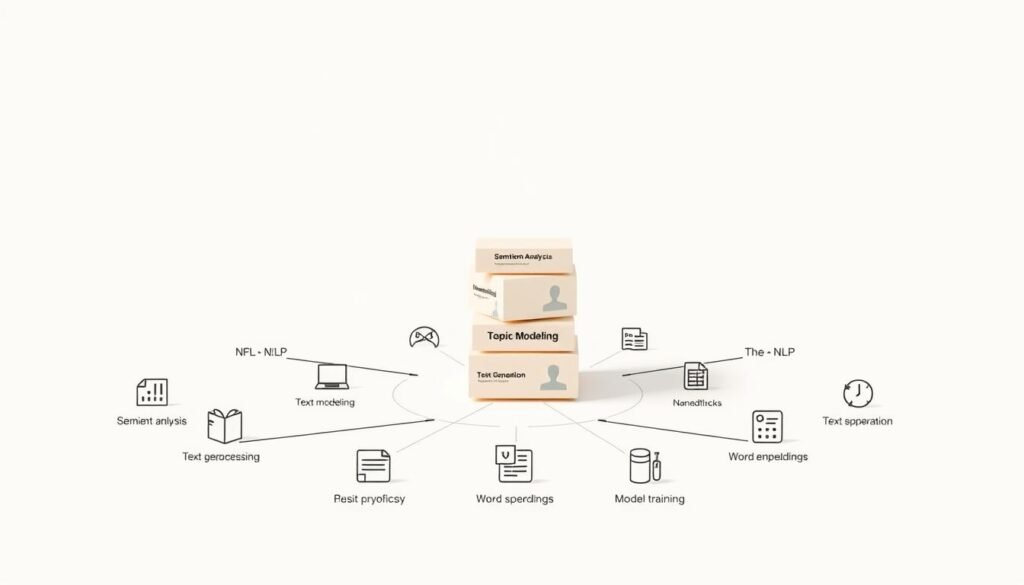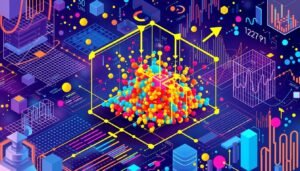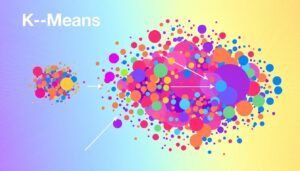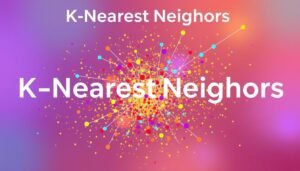Natural Language Processing or NLP is a fascinating field that bridges human language and computer understanding. It allows machines to interpret, analyze, and even generate text in ways that mimic human communication. With Python, this technology becomes accessible and powerful, enabling developers to create innovative solutions.
At its core, NLP combines language processing techniques with deep learning to enhance computational linguistics. This integration has led to breakthroughs in areas like sentiment analysis, chatbots and language translation. Python’s versatility makes it the go-to language for implementing these advanced techniques.
In this guide, we’ll explore key Python libraries like NLTK, spaCy and TensorFlow. These tools simplify complex tasks, making it easier to build and deploy NLP models. Whether you’re a beginner or an experienced developer, this comprehensive resource will provide practical insights and step-by-step techniques.
From historical perspectives to modern trends, this guide ensures you stay relevant in today’s fast-evolving tech landscape. Let’s dive into the world of natural language and unlock its potential with Python.
Key Takeaways
- Natural Language Processing bridges human language and computer understanding.
- Python is a powerful tool for implementing NLP techniques.
- Deep learning enhances computational linguistics in NLP.
- Key libraries like NLTK, spaCy and TensorFlow simplify complex tasks.
- This guide covers both historical insights and modern applications.
Introduction to Natural Language Processing
Understanding human language through technology has revolutionized how machines interact with us. This field, often referred to as Natural Language Processing, enables computers to interpret, analyze and generate text in ways that mimic human communication. It’s a cornerstone of modern machine learning, driving innovations across industries.
What is Natural Language Processing and Its Importance?
Natural Language Processing focuses on bridging the gap between human language and computational systems. It allows machines to understand context, sentiment and intent, making interactions more intuitive. For example, voice assistants like Apple’s Siri and Amazon’s Alexa rely on this technology to respond to user queries effectively.
One of its key components is named entity recognition, which identifies and categorizes specific information in text, such as names, dates, or locations. This technique is essential for tasks like data extraction and information retrieval. Additionally, language models play a crucial role in predicting and generating coherent text, enhancing applications like chatbots and search engines.
How Natural Language Processing Transforms Communication
Natural Language Processing has transformed how we communicate with machines. From customer service chatbots to automated translation tools, it’s making interactions faster and more efficient. For instance, businesses use it to analyze customer feedback and improve their services.
Here’s a quick look at how NLP has evolved:
| Era | Approach | Impact |
|---|---|---|
| Early Stages | Rule-Based Systems | Limited flexibility, manual rule creation |
| Modern Era | Machine Learning-Driven | Adaptive, scalable, and more accurate |
“The integration of human language understanding with computational efficiency is reshaping the future of technology.”
This shift from rule-based systems to machine learning-driven approaches has made NLP more powerful and versatile. Today, it’s not just about understanding language but also about generating meaningful and contextually relevant responses.
The Evolution of NLP: From Rules to Deep Learning
The journey of language processing has evolved dramatically over the decades. What began as simple rule-based systems has transformed into sophisticated models capable of understanding and generating human-like text. This evolution has shaped how we interact with technology today.
Historical Milestones in NLP
In the early days, language processing relied on if-then rules and manual coding. These systems were rigid and struggled with the complexity of human language. For example, a rule-based approach might fail to understand sarcasm or idiomatic expressions.
Breakthroughs in statistical methods marked a turning point. Techniques like sentiment analysis and word mapping allowed machines to analyze text more effectively. These methods introduced a level of adaptability that rule-based systems lacked.
The advent of deep learning revolutionized the field. Models like Transformers and GPT brought unprecedented accuracy in understanding and generating language. These architectures handle context and nuance far better than earlier approaches.
Here’s a quick comparison of historical and modern methods:
| Era | Approach | Impact |
|---|---|---|
| Early Stages | Rule-Based Systems | Limited flexibility, manual rule creation |
| Modern Era | Deep Learning Models | Adaptive, scalable, and highly accurate |
“The shift from rules to learning models has redefined how machines understand language.”
Today, these advancements power everyday applications like search engines, chatbots, and virtual assistants. They’ve made technology more intuitive and accessible, shaping the way we communicate in the digital age.
Understanding the Fundamentals of NLP Techniques
Breaking down language into its core components is essential for effective machine understanding. This process involves analyzing both the structure and meaning of text, enabling machines to interpret and generate human-like responses. Two key approaches—syntactical and semantic analysis—form the foundation of these techniques.
Syntactical vs. Semantic Analysis
Syntactical analysis focuses on the structure of language. It involves parsing sentences to understand grammar rules and relationships between words. For example, identifying subjects, verbs and objects helps machines comprehend sentence construction.
Semantic analysis, on the other hand, delves into meaning. It interprets context, intent and relationships between words. This approach is crucial for tasks like sentiment analysis, where understanding emotions in text is key.
Here’s a comparison of the two:
| Approach | Focus | Application |
|---|---|---|
| Syntactical Analysis | Sentence Structure | Parsing, Grammar Rules |
| Semantic Analysis | Meaning and Context | Sentiment Analysis, Intent Recognition |
Data Preprocessing and Tokenization
Before analyzing text, it must be prepared for processing. Data preprocessing converts raw datum into a usable format. This includes cleaning text, removing stop words, and handling special characters.
Tokenization breaks text into smaller units, like words or sentences. This step is essential for further analysis. For example, the sentence “I love Python” becomes [“I”, “love”, “Python”].
Additional techniques like lemmatization and stemming simplify words to their base forms. These steps are crucial for training a robust model and improving accuracy.
Practical applications like machine translation rely on these foundational methods. Tools like NLTK and spaCy implement these techniques, making them accessible for developers.
NLP Applications in Business and Everyday Life
From customer service to content creation, language processing is reshaping industries worldwide. Businesses are leveraging these advanced techniques to streamline operations, enhance user experiences, and gain actionable insights. Whether it’s automating repetitive tasks or improving communication, the impact is undeniable.

Chatbots, Virtual Assistants, and Customer Support
Chatbots and virtual assistants are among the most visible applications of language processing. Tools like Amazon’s Alexa and IBM® watsonx™ use these techniques to understand and respond to user queries in real time. They handle tasks ranging from answering FAQs to scheduling appointments, making customer support faster and more efficient.
These systems rely on entity recognition to identify key information like names, dates and locations. This ensures accurate responses and seamless interactions. For example, a chatbot in the healthcare industry can extract patient details and provide personalized recommendations.
Data Analysis, Machine Translation and Content Generation
In business environments, language processing drives data analysis and decision-making. It helps companies analyze customer feedback, detect trends and improve services. For instance, financial institutions use it to monitor transactions and detect fraud.
Machine translation tools like Google Translate break language barriers, enabling global communication. Content generation platforms use learning models to create articles, reports and even marketing copy. These applications save time and resources while maintaining quality.
Here’s a comparison of how language processing is applied across industries:
| Industry | Application | Benefit |
|---|---|---|
| Healthcare | Patient Data Extraction | Personalized Care |
| Finance | Fraud Detection | Enhanced Security |
| Legal | Document Analysis | Efficient Case Management |
“Language processing is not just a tool; it’s a game-changer for businesses and individuals alike.”
By integrating these techniques, organizations can streamline processes, reduce costs and deliver better experiences. From automating document handling to generating insights, the possibilities are endless.
Implementing NLP with Python Libraries
Python libraries are essential tools for implementing advanced language processing techniques. They simplify complex tasks, enabling developers to build robust applications efficiently. From text preprocessing to deep learning, these libraries provide the foundation for effective language analysis.
Exploring NLTK, spaCy, and Gensim
NLTK is a versatile library for text processing. It offers tools for tokenization, stemming, and part-of-speech tagging. These features make it ideal for beginners and experts alike. For example, you can use NLTK to break down a sentence into individual words or identify grammatical structures.
spaCy is known for its speed and efficiency. It excels in tasks like named entity recognition and dependency parsing. This library is widely used in production environments due to its scalability. For instance, spaCy can analyze a document to extract key information like names, dates and locations.
Gensim specializes in topic modeling and document similarity. It’s particularly useful for analyzing large text datasets. Techniques like Latent Dirichlet Allocation (LDA) help uncover hidden themes in documents. This makes Gensim a powerful tool for content analysis and recommendation systems.
Leveraging TensorFlow and Other Deep Learning Tools
TensorFlow is a leading framework for deep learning. It supports advanced techniques like sequence-to-sequence models and transformers. These models are crucial for tasks like machine translation and text generation. For example, TensorFlow can train a model to translate sentences from one language to another.
Other tools like Keras and PyTorch also play a significant role. They simplify the process of building and training neural networks. These frameworks are essential for implementing cutting-edge language processing techniques.
Here’s a quick comparison of these libraries:
| Library | Core Capabilities | Use Case |
|---|---|---|
| NLTK | Tokenization, POS Tagging | Text Preprocessing |
| spaCy | Entity Recognition, Parsing | Document Analysis |
| Gensim | Topic Modeling, Similarity | Content Analysis |
| TensorFlow | Deep Learning Models | Text Generation |
“The right Python library can transform how you approach language processing tasks.”
By integrating these tools, developers can build powerful applications that analyze and generate text effectively. Whether you’re working on a chatbot or a translation tool, these libraries provide the resources you need to succeed.
Advanced NLP Algorithms and Models
The development of advanced algorithms has significantly enhanced the capabilities of language processing. These algorithms range from traditional statistical methods to cutting-edge neural networks, each offering unique advantages for various tasks.
Statistical and Machine Learning Approaches
Traditional statistical methods laid the foundation for language processing. These approaches rely on predefined rules and probabilities to analyze text. For example, n-gram models predict the next word in a sentence based on previous words.
Machine learning algorithms brought more flexibility. They learn patterns from data, improving accuracy over time. Techniques like support vector machines and random forests are widely used for tasks like sentiment analysis and text classification.
Here’s a comparison of the two:
| Approach | Focus | Application |
|---|---|---|
| Statistical Methods | Rule-Based Analysis | Basic Text Prediction |
| Machine Learning | Data-Driven Learning | Sentiment Analysis, Classification |
Neural Networks and Self-supervised Learning
Neural networks have revolutionized language processing. These deep learning models mimic the human brain, enabling complex tasks like language translation and text generation. Architectures like Transformers excel in understanding context and relationships in text.
Self-supervised learning is a game-changer. It allows models to learn from unlabeled data, reducing the need for extensive annotations. This approach is particularly beneficial for tasks like recognition and language modeling.
Real-world applications include chatbots, virtual assistants, and content generation tools. These technologies rely on advanced algorithms to deliver accurate and meaningful interactions.
“The integration of neural networks and self-supervised learning has pushed the boundaries of what’s possible in language processing.”
By leveraging these advanced techniques, developers can create powerful applications that transform how we interact with technology.
NLP: Leveraging Neural Networks and Deep Learning
Neural networks and deep learning have become the backbone of modern language processing systems. These advanced techniques enable machines to understand, generate, and translate text with remarkable accuracy. By leveraging these models, developers can create powerful applications that mimic human-like interactions.
Sequence-to-Sequence and Transformer Models
Sequence-to-sequence models are widely used for tasks like translation and text generation. They process an input sequence, such as a sentence, and produce an output sequence in another language or format. These models rely on encoder-decoder architectures to map input to output effectively.
Transformer models, like BERT and GPT, have revolutionized language processing. They use self-attention mechanisms to analyze relationships between words in a sentence. This approach improves both input processing and overall model performance, making them ideal for complex tasks.
Autoregressive and Foundation Models
Autoregressive models generate text one word at a time, using previously generated words as context. This method is highly effective for tasks like content creation and dialogue systems. For example, GPT models use this approach to produce coherent and contextually relevant text.
Foundation models are prebuilt for industry applications, offering a starting point for developers. These models are trained on vast datasets, enabling them to handle diverse tasks with minimal fine-tuning. They are particularly useful for businesses looking to implement advanced language processing systems quickly.
Here’s a comparison of key models:
| Model | Core Feature | Application |
|---|---|---|
| Sequence-to-Sequence | Encoder-Decoder Architecture | Translation, Text Generation |
| Transformer | Self-Attention Mechanism | Contextual Understanding |
| Autoregressive | Word-by-Word Generation | Content Creation, Dialogue Systems |
“The integration of neural networks and deep learning has pushed the boundaries of what’s possible in language processing.”
Despite their advantages, these models face challenges. High computational requirements and biases in training data can impact performance. However, advancements in hardware and data preprocessing techniques are addressing these issues, making these models more accessible and reliable.
Real-world examples include:
- Google Translate using sequence-to-sequence models for accurate translations.
- ChatGPT leveraging autoregressive methods for natural conversations.
- BERT improving search engine results through contextual understanding.
By understanding these advanced techniques, developers can build innovative applications that transform how we interact with technology.
Key NLP Tasks and Techniques
Extracting meaning from text is at the heart of modern language processing techniques. These tasks enable machines to interpret, analyze, and summarize unstructured data, transforming it into actionable information. From identifying entities to understanding sentiment, these methods are essential for building intelligent systems.

Named Entity Recognition and Part-of-Speech Tagging
Named Entity Recognition (NER) identifies and categorizes specific elements in text, such as names, dates, and locations. This technique is crucial for tasks like data extraction and information retrieval. For example, NER can extract customer names and addresses from emails, streamlining business processes.
Part-of-Speech (POS) Tagging analyzes the grammatical structure of sentences. It identifies nouns, verbs, adjectives, and other parts of speech, helping machines understand sentence construction. This is foundational for tasks like machine translation and text generation.
Sentiment Analysis and Text Summarization
Sentiment Analysis evaluates the emotional tone of text. It’s widely used to analyze customer feedback, reviews, and social media posts. For instance, businesses use it to gauge customer satisfaction and improve services.
Text Summarization distills large volumes of text into concise summaries. This technique is invaluable for processing lengthy documents, such as research papers or news articles. It helps users quickly grasp the main topic without reading the entire content.
“These tasks not only extract meaning but also build the foundation for more responsive and intelligent language models.”
Practical applications of these techniques are vast. For example, NER and POS tagging power search engines, while sentiment analysis enhances customer support systems. Text summarization is used in news aggregation platforms to provide quick insights.
By mastering these key tasks, developers can create applications that understand and generate text with remarkable accuracy. These techniques are the building blocks of modern language processing, driving innovation across industries.
Challenges and Pitfalls of Natural Language Processing
Despite its advancements, language processing faces significant hurdles that impact its effectiveness. From ambiguities in human language to biases in training data, these challenges can limit the accuracy and reliability of computational systems. Understanding these pitfalls is crucial for improving models and ensuring they meet real-world needs.
Ambiguities and Evolving Language
Human language is inherently ambiguous, making it difficult for machines to interpret meaning accurately. Words can have multiple meanings depending on context, and phrases like idioms or sarcasm add layers of complexity. For example, the sentence “She’s on fire” could mean someone is performing exceptionally well or literally burning.
Evolving language also poses challenges. Slang, new words, and cultural shifts can render static models outdated. A model trained on data from a decade ago might struggle to understand modern expressions or trends. This dynamic nature requires continuous updates and adaptability in language processing systems.
Biases in Data and Model Limitations
Biases in training data can lead to skewed results. If the data reflects societal prejudices, the model may replicate or amplify these biases. For instance, a sentiment analysis tool might associate certain words with negative emotions based on biased data, leading to inaccurate conclusions.
Machine translation systems often face limitations in handling complex sentences or rare languages. Errors in feature extraction can result in incorrect translations, especially for idiomatic expressions. Similarly, text generation models might produce grammatically correct but contextually irrelevant content.
“Addressing biases and ambiguities is essential for building fair and effective language processing systems.”
Real-world examples highlight these issues. In 2016, a chatbot designed for customer service started producing offensive responses due to biased training data. Similarly, early translation tools struggled with languages like Finnish, which have complex grammatical structures.
Ongoing research aims to overcome these challenges. Techniques like debiasing algorithms and context-aware models are improving accuracy and fairness. By addressing these pitfalls, developers can create more robust and reliable language processing systems.
Future Trends in NLP and AI Applications
The future of language processing is being shaped by groundbreaking innovations that promise to redefine how we interact with technology. From generative AI to advanced conversational agents, these trends are transforming industries and enhancing user experiences. Let’s explore what’s on the horizon.
Generative AI, Chatbots and Conversational Agents
Generative AI is revolutionizing content creation and communication. Tools like GPT and BERT are enabling machines to generate human-like text, making tasks like writing articles or composing emails faster and more efficient. These models are also powering next-generation chatbots that can handle complex conversations with ease.
Conversational agents are becoming more intuitive. They can understand context, detect emotions, and provide personalized responses. For example, customer service chatbots now use named entity recognition to extract key details like names and order numbers, ensuring accurate and efficient support.
Emerging Innovations and Use Cases
Advanced libraries and frameworks are driving innovation in language processing. Tools like TensorFlow and spaCy are making it easier to build and deploy sophisticated models. These resources are essential for tasks like sentiment analysis, machine translation, and text summarization.
Industries like healthcare, finance, and legal are leveraging these technologies. In healthcare, language processing helps analyze patient records and provide personalized care. Financial institutions use it for fraud detection and risk assessment. Legal professionals rely on it for document analysis and case management.
Search functionalities are also improving. Smarter algorithms can understand user intent and deliver more relevant results. For instance, search engines now use natural language understanding to interpret complex queries and provide accurate answers.
“The integration of generative AI and advanced conversational agents is setting the stage for a more intuitive and efficient future.”
Pioneering projects are already showcasing these advancements. For example, AI-driven platforms are creating personalized learning experiences for students. In the business world, automated content generation tools are saving time and resources while maintaining quality.
As these technologies evolve, they will continue to shape how we interact with machines. The future of language processing is not just about understanding text but also about creating meaningful and contextually relevant interactions.
Best Practices for Optimizing NLP Models in Python
Optimizing language processing models in Python requires a strategic approach to ensure accuracy and efficiency. From preprocessing data to fine-tuning models, each step plays a crucial role in achieving optimal performance. By following industry best practices, you can build robust systems that deliver meaningful insights.
Effective Data Preprocessing Strategies
Data preprocessing is the foundation of any successful model. Start by cleaning the text, removing stop words, and handling special characters. Tokenization breaks text into smaller units, making it easier for machines to analyze. Techniques like lemmatization and stemming simplify words to their base forms, improving model accuracy.
For example, converting “running” to “run” ensures consistency in analysis. Preprocessing also involves handling missing data and normalizing text. These steps prepare the data for classification and other tasks, ensuring the model can interpret it effectively.
Feature Extraction and Model Fine-tuning
Feature extraction captures the essence of the text, transforming it into numerical data that models can process. Techniques like part-of-speech tagging and named entity recognition identify key elements in the text. This helps the model understand context and relationships between words.
Fine-tuning involves adjusting model parameters to improve performance. Use techniques like grid search or random search to find the best hyperparameters. Regularly validate the model using test data to ensure it generalizes well to new inputs. For more advanced strategies, consider optimizing machine learning models.
“Continuous learning and adaptation are key to maintaining high-performing language processing systems.”
By leveraging open-source libraries like NLTK and spaCy, you can streamline the optimization process. These tools provide prebuilt functions for common tasks, saving time and effort. Additionally, stay updated with community best practices to refine your approach and achieve better results.
Conclusion
Python has become a cornerstone for building advanced language applications, offering tools that simplify complex tasks. This article explored the evolution, techniques, and challenges of language processing, highlighting Python’s versatility in implementing state-of-the-art solutions.
From creating intelligent chatbot systems to analyzing sentiment, Python libraries like NLTK and spaCy provide the foundation for innovation. By experimenting with various methods, developers can unlock the full potential of language applications.
As you continue your journey, remember that learning and experimentation are key. Dive deeper into Python’s capabilities and explore how you can shape the future of language processing. The possibilities are endless and your creativity is the limit.












7 thoughts on “How to Perform Natural Language Processing (NLP) with Python”
I have been browsing online more than 3 hours today, yet I never found any interesting article like yours. It is pretty worth enough for me. Personally, if all webmasters and bloggers made good content as you did, the net will be much more useful than ever before.
I wanted to compose you this little bit of note to finally thank you very much once again for your fantastic knowledge you have contributed in this article. It’s certainly seriously generous with people like you giving unreservedly what a lot of people could have marketed for an ebook to earn some cash for themselves, specifically considering that you could possibly have done it in case you wanted. Those basics additionally served to become easy way to know that many people have the same fervor just as my personal own to figure out much more with respect to this matter. I am sure there are many more enjoyable occasions up front for individuals who look into your blog post.
Excellent post. I was checking constantly this weblog and I’m impressed! Extremely useful info particularly the closing part 🙂 I handle such info a lot. I was seeking this certain info for a very lengthy time. Thank you and best of luck.
Hmm is anyone else having problems with the pictures on this blog loading? I’m trying to determine if its a problem on my end or if it’s the blog. Any feedback would be greatly appreciated.
Howdy! This post couldn’t be written any better! Reading this post reminds me of my previous room mate! He always kept chatting about this. I will forward this article to him. Pretty sure he will have a good read. Thank you for sharing!
Magnificent goods from you, man. I have understand your stuff previous to and you are just extremely wonderful. I really like what you have acquired here, really like what you’re saying and the way in which you say it. You make it enjoyable and you still care for to keep it smart. I cant wait to read much more from you. This is really a tremendous web site.
Your place is valueble for me. Thanks!…